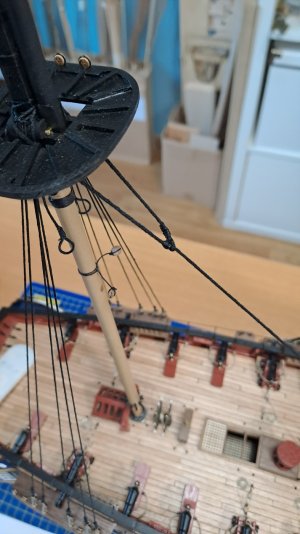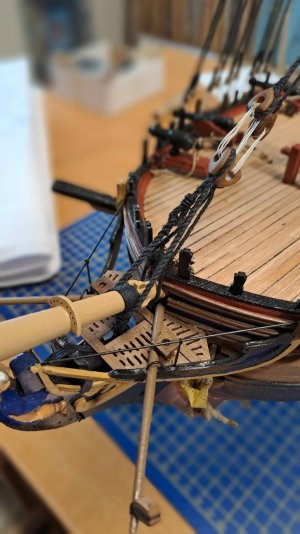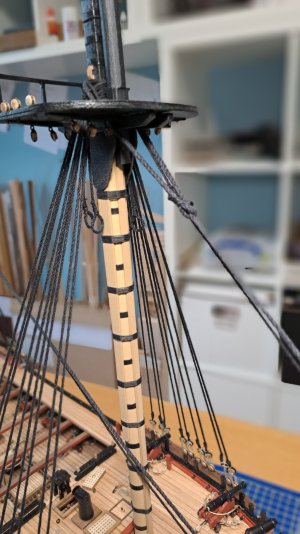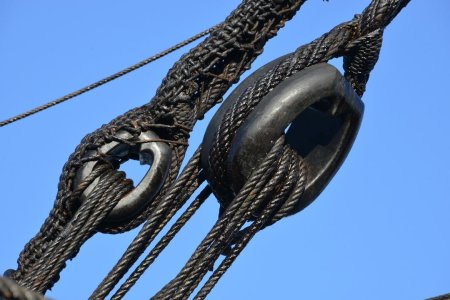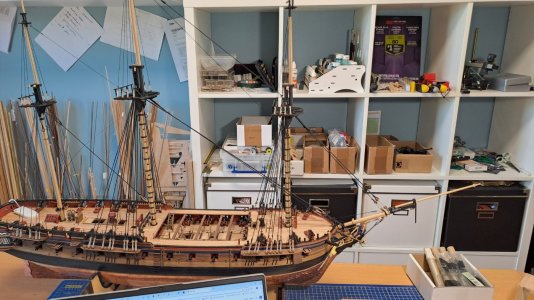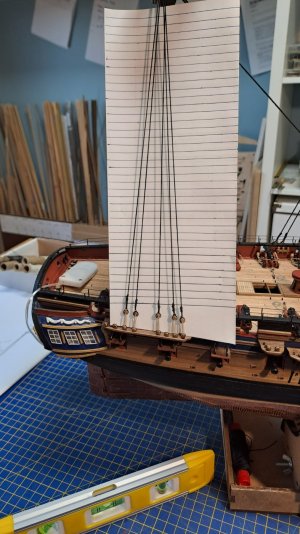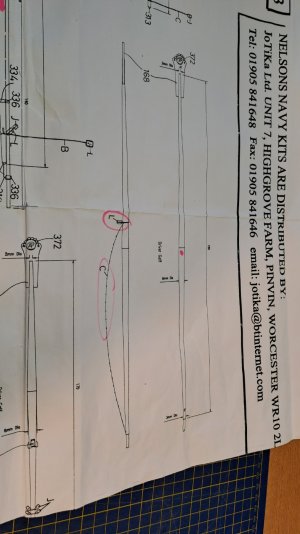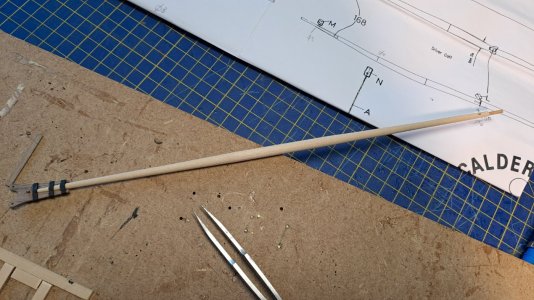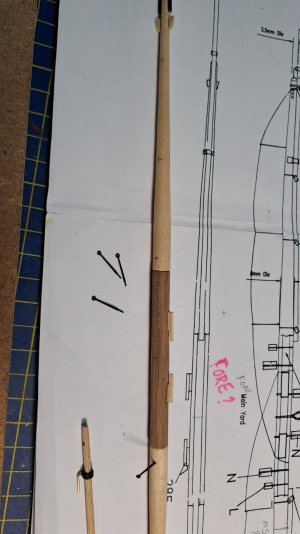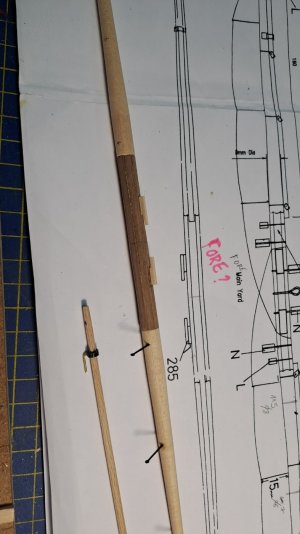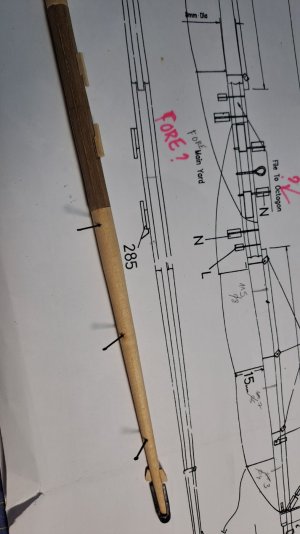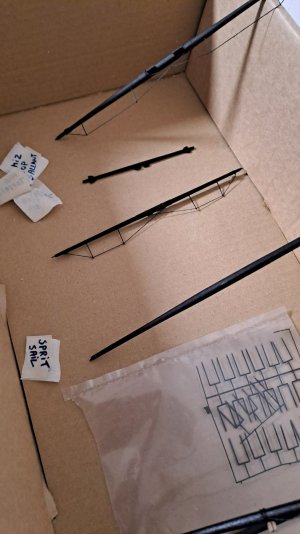A small update:
It is slowly progressing. I am trying to apply the rigging as faithfully as possible. I am doing a lot of research and am fortunate that I have (finally) received the correct reference book from Frank.
Before starting with the ratlines I chose to first apply the Stays. This is because of the accessibility of the masts, i.e. you can work nicer...
At the moment I have wired the bowprit: the bobstays and now the Maringale.
And now a confession:
there has been a very interesting discussion about whether or not to tar the shrouds and ratlines. The kit provides Natural Hemp (0.25 mm) for the ratlines. However, in the accompanying text it is clearly stated that the Ratlines should be colored with black ink. So indeed black!
I had overlooked this.
In the meantime I ordered black rigging cord of 0.25 mm (Mantua).
excellent quality but too stiff which makes it difficult to make the knots. Today I ordered another cord and have to wait a few days before finally starting on the ratlines.
Cheers
Marc
View attachment 505060
View attachment 505061
View attachment 505062
View attachment 505063






